TRAY CEILINGS - TROMPE L'OEIL AND OTHER TECHNIQUES
For your consideration, we have compiled some photographs for the three recessed ceiling areas (also known as "tray ceilings") in your front and back parlors. Any of these ideas can be replicated, combined, or used as guidelines for inspiration in the creation of your murals. Our team includes skilled artists who have years of experience in trompe l'oeil painting. They will be happy to listen to any idea or suggestion you might have.
BACK PARLOR/PLAYROOM
Maureen expressed the desire to have an open sky in this room. The morning light in it is exceptional, and a sky-blue trompe l'oeil painting would wonderfully complement the space. We found several ideas, which range from clouds in stark contrast to a vivid cobalt-blue sky, to more subdued scenes that include birds, nature, and people.
Andrea Mantegna's ceiling painting for "La Camera degli Sposi" (The Chamber of the Bride and the Groom, 1465-1474 - Ducal Palace, Mantua, Italy) immediately came to mind for its timeless beauty: frolicking cherubs alternate with portraits of people related to the couple who commissioned the fresco, a basket of fruit playfully propped up with a stick as if about to be used for a prank, and a peacock looking at a hovering falcon.

Our artists would create a version that adapts to the rectangular shape of the opening, and would expand the scope of the painting to suit the role of the room - for example, specific elements you might find significant and/or evocative.
The following is a modern take on Mantegna's painting above. In this version, the commission included portraits of family members. The balustrade in this photo is not trompe l'oeil, but it could be painted as such to create the effect of a large rectangular balcony overlooking the playroom.

The painting below embodies a simpler approach: some climbing plants are beginning to take over the opening - for the time being only peeking into the room. The sky is a beautiful French blue with soft clouds that evoke Rococo landscapes.
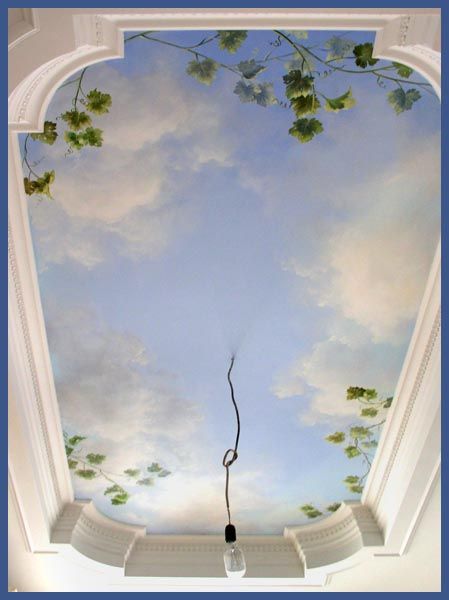
The next idea is similar, but here the vegetation is more exotic. Some swallows dart through the sky or rest on the rope suspended to support the decorative sunshade.
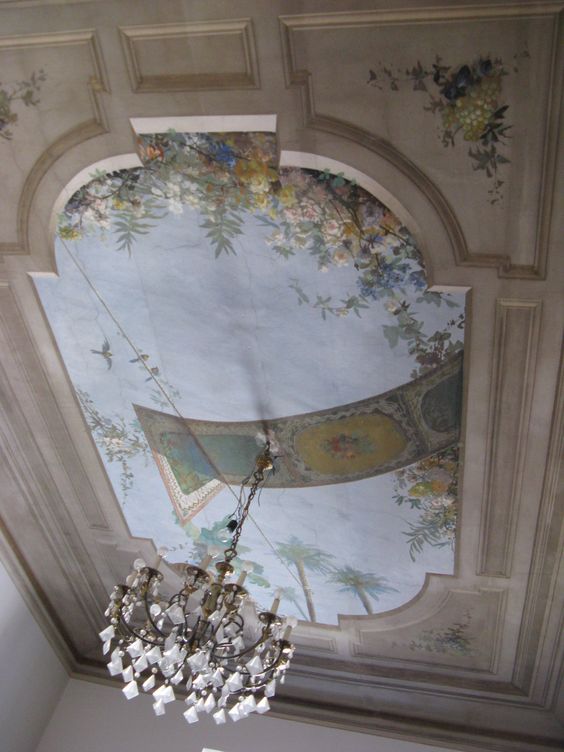
A design that combines some of the ideas found in the images introduced above is this classical trompe l'oeil ceiling painting, featuring a balustrade that frames the opening, lush vegetation, a cat perched up on the railing, and birds hovering over the room. Sunshine!
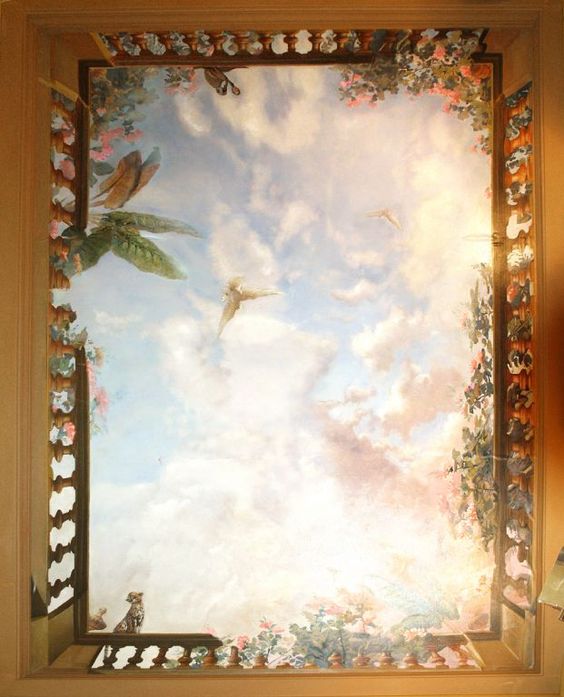
DINING AREA
The dining area is the only one to have a chandelier installed in the middle of the recessed paneling. There are several ways of incorporating a light fixture into a trompe l'oeil painting. The first one shows an open sky with lovely, shaded clouds. The chandelier is supported by a decorative geometric brass or bronze scroll that evokes Victorian designs. Roses and other vegetation are seen alongside the perimeter of the opening.
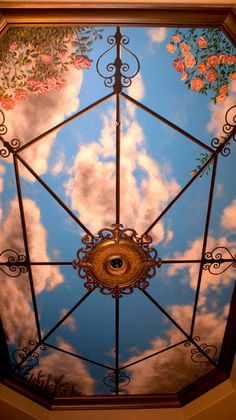
In case you would like an elaborate metal canopy to attach to the ceiling to create this design and your chandelier does not have one, we would be able to find a piece that is appropriate for it.
Similar in conception, but this time found in a dome, the following photograph shows the top of a gazebo-like structure in which climbing plants are about to reach the decorative center. A peacock and other elements nicely complement the effect of the trompe l'oeil painting. Because of the shape, this design would have to be expanded to suit the rectangular space in the dining area.

Two more interesting gazebo-like examples. The first has climbing plants wrapping around the metal frame, extending to the perimeter of the recessed paneling and even growing beyond the edge. The sky is painted in pastel tones; a bird flies through the branches.
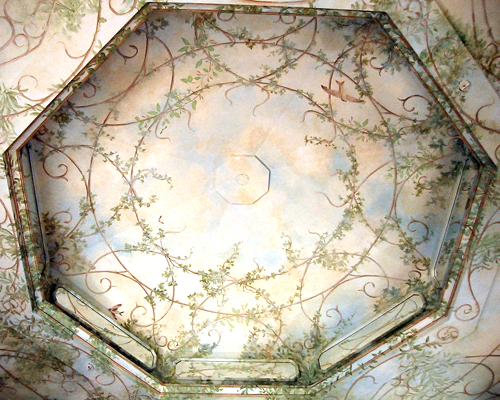
The second one features luscious vegetation and birds perched on the edge of the top opening. This gives you a good idea of how the chandelier can be integrated in a design of this kind.
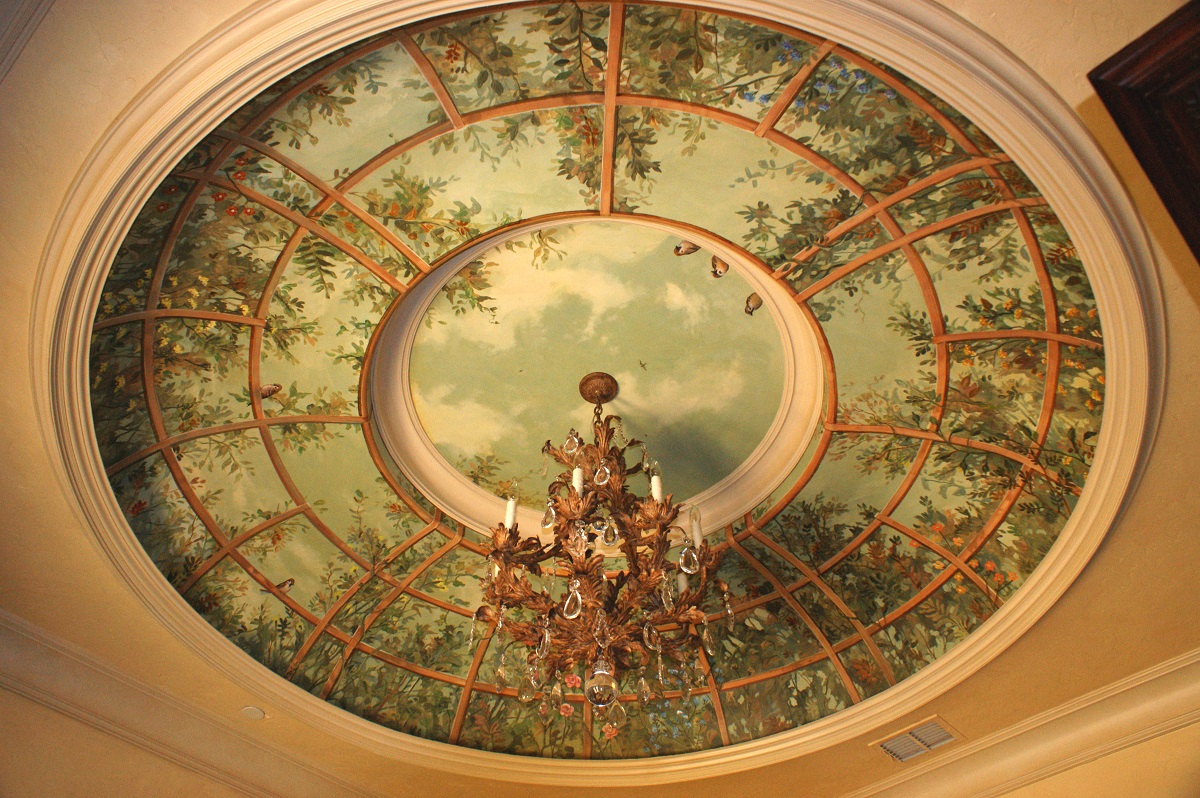
If you would like to carry over the idea of open sky in this space as well, we think a traditional painting such as the one we already recommended for the back parlor/playroom would work beautifully when scaled down and adapted to the size of the opening:

Going in a completely different direction, geometric designs - especially when evoking times past - could be successfully implemented in the tray ceiling above the dining room table. The first presents a gold perimeter cove, complemented by an abstract floral pattern in the middle section, all executed with metallic paints and faux effects. There isn't a lot of gold in the room, so this kind of bright gold would perhaps be out of place. But this can give you an idea of the potential of metallic finishes. Metallic paints subtly refract light, and produce lovely, warm effects when lights are dim.
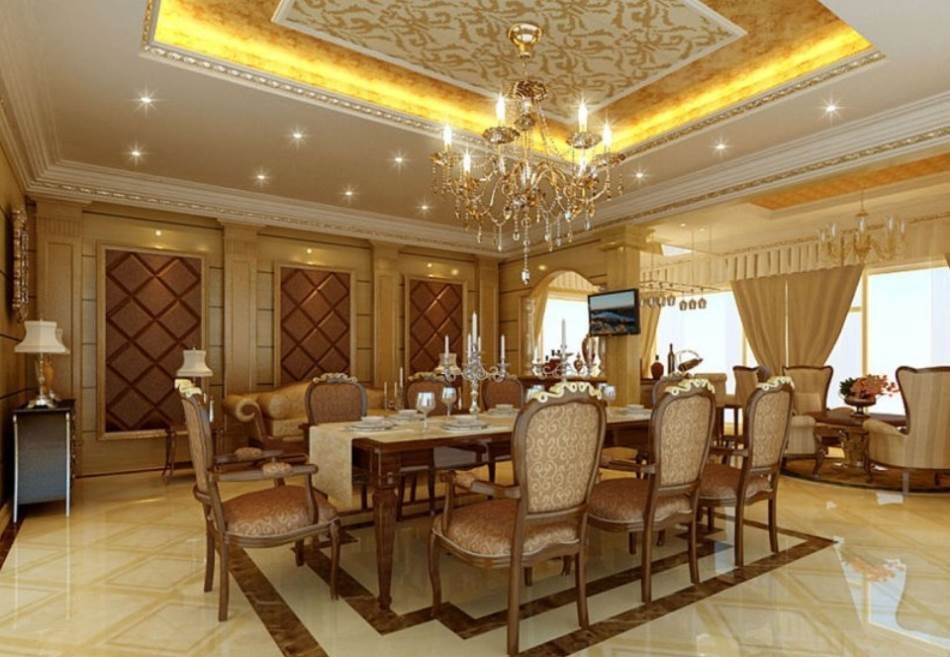
Another example of geometric designs in metallic finishes is this dining room ceiling. The color scheme is an ivory on white gold, but the opportunities to coordinate colors and patterns is endless. A large damask pattern, favored in the Victorian era, could work even better, as your home has quintessentially Victorian elements integrated with more modern furniture and eclectic artwork.

Here are two more formal and classical geometric patterns. The central circle in these designs is perfect as an opening for the chandelier's canopy. Both examples include elements that evoke antiquity and elegance. The color scheme would be adapted to that of the room.
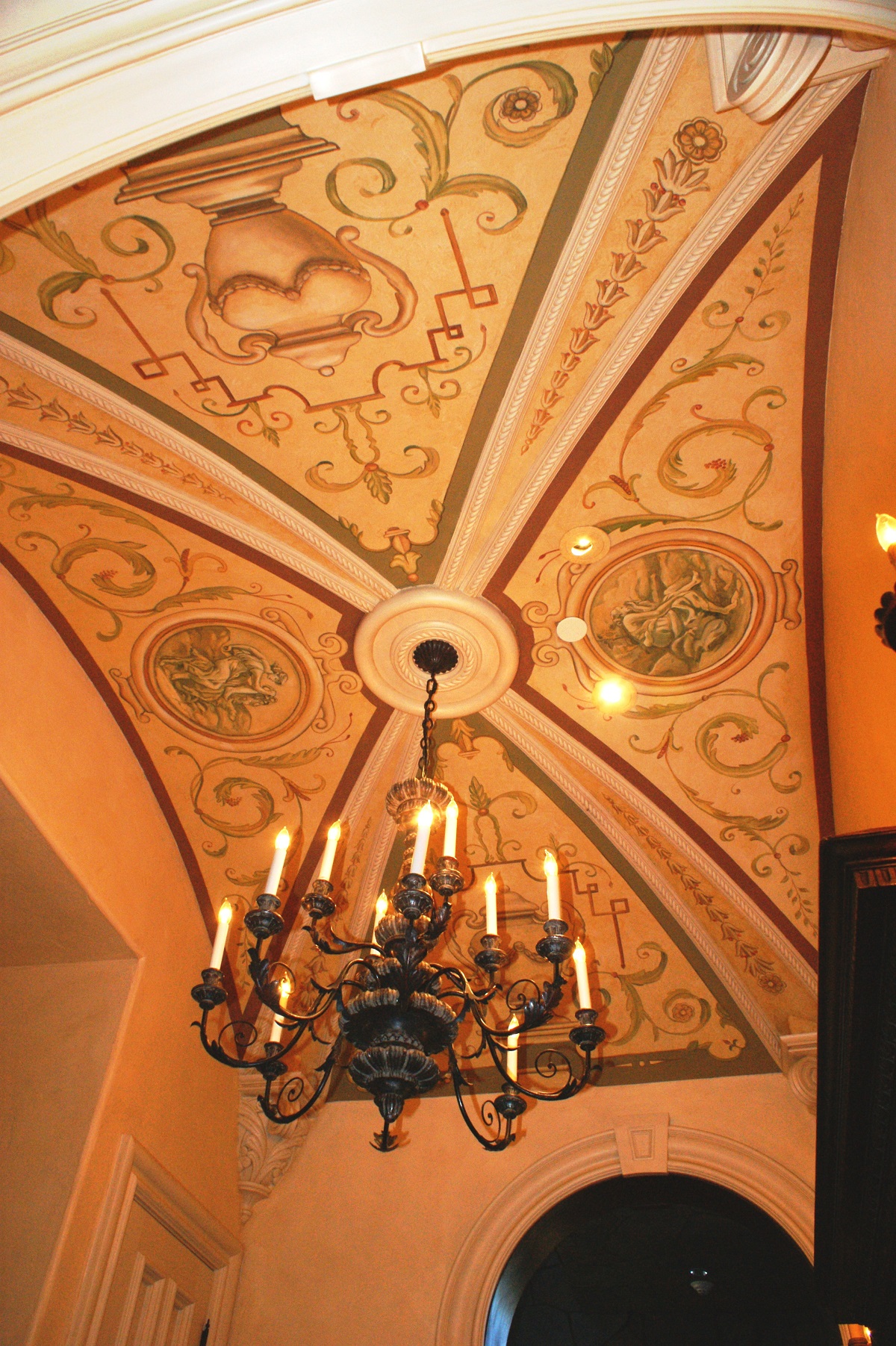
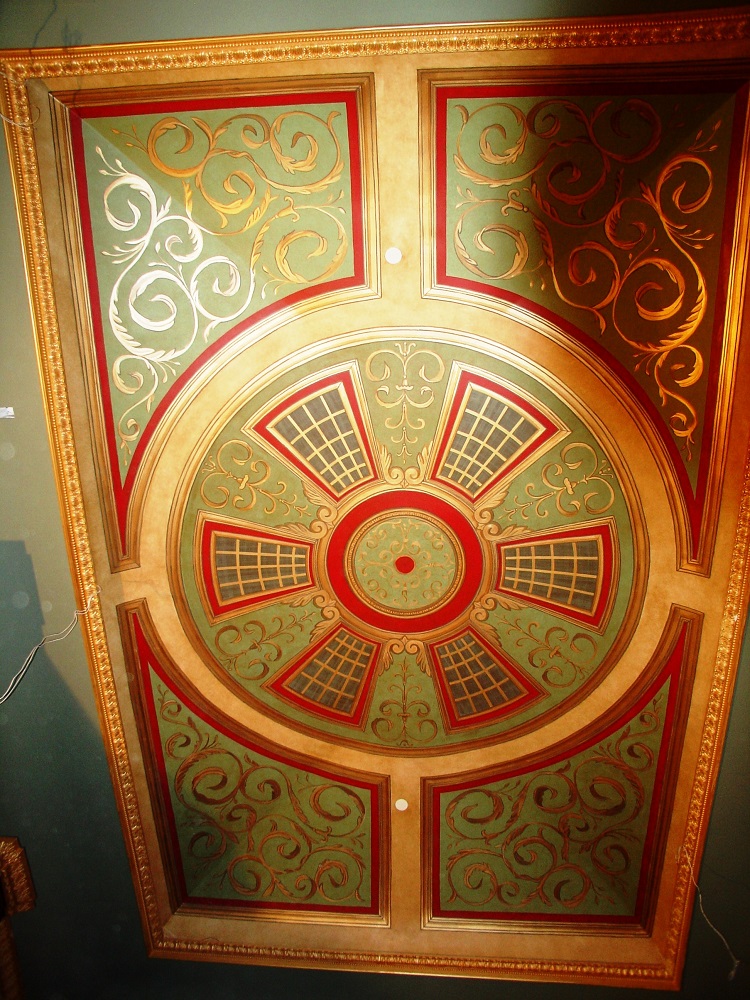
Tray ceilings can also be enhanced by using embossed wall coverings such as Lincrusta and Anaglypta, which were all the rage in the second half of the 19th century. Because of their contrasts in surface texture, these wall coverings can be painted, offering extraordinary effects. Here are some beautiful examples of hand-painted Lincrusta patterns:
Here it is, applied as a border painted with metallic finishes during the restoration of a parlor in an 1880s Newton home.
And here are two combined patterns, hanging in a South-End reception room that we recently restored.
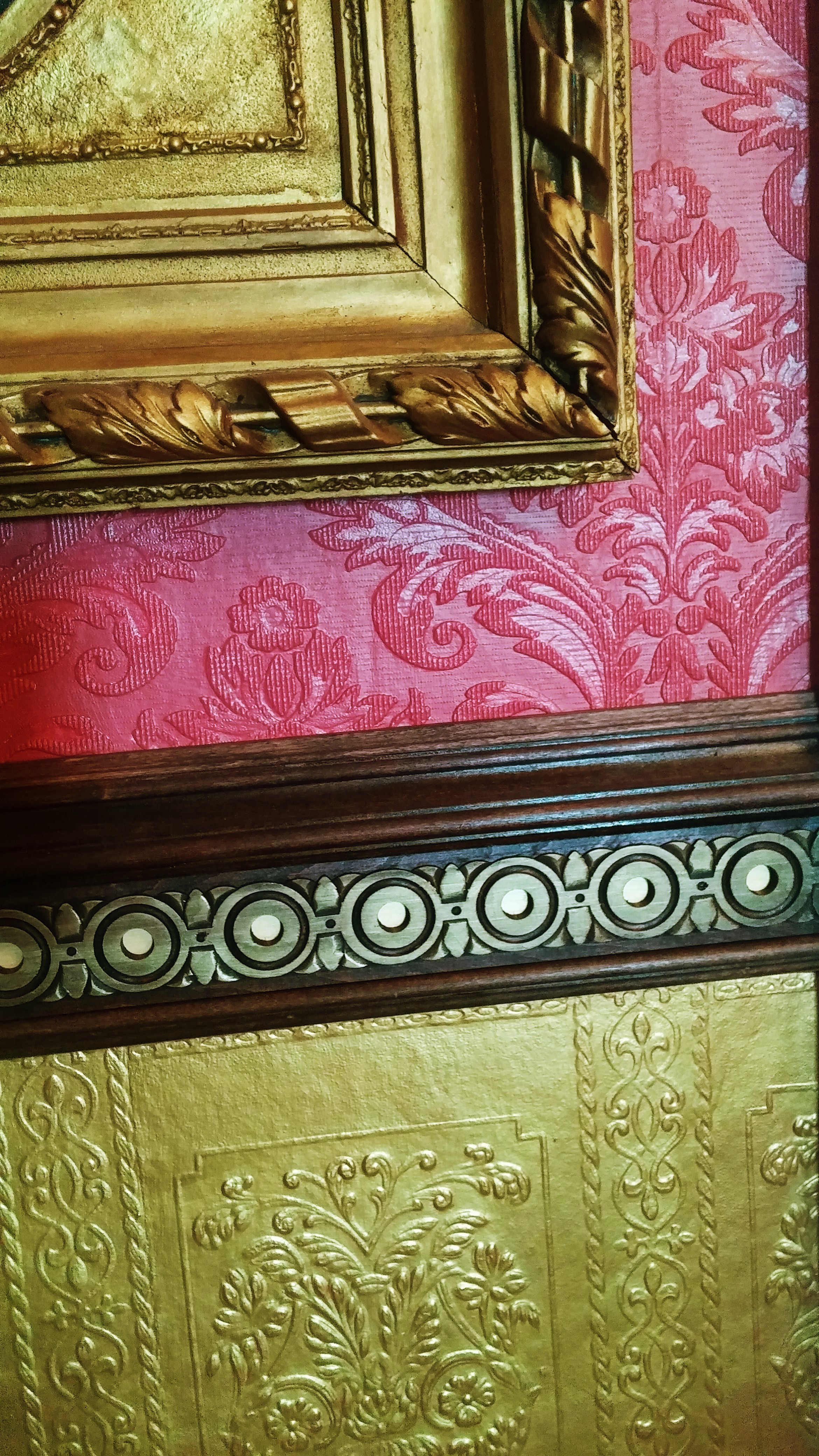
Applied to a ceiling, Lincrusta panels have a dramatic impact. The following is a paneling found in a 19th-century English manor:
Here are some beautiful geometric patterns that can be successfully used as ceiling coverings:
In addition to the geometric pattern, the design within the tray ceiling above the dining area could also include a small plaster medallion to enhance the flat surface (see last photo above). Here are some examples - some more whimsical than others, but all original from designs used in 19th-century Boston homes:
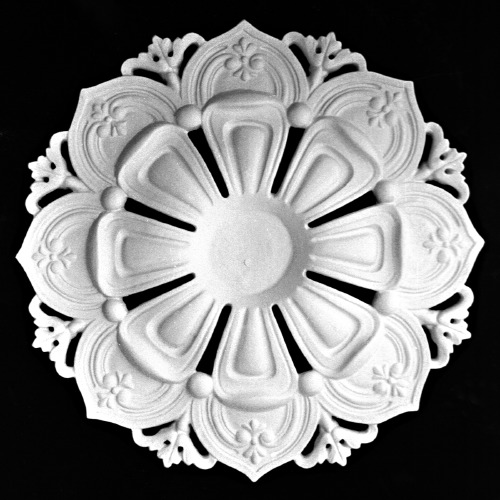
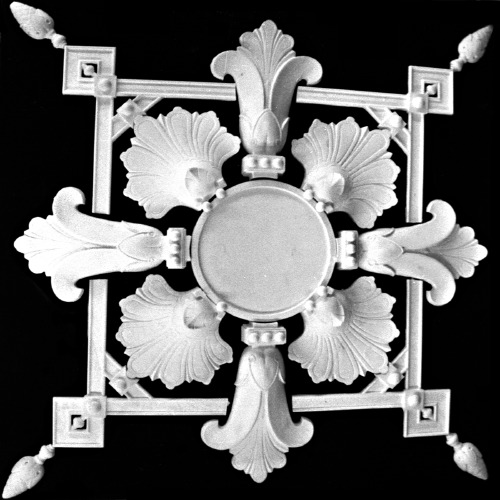
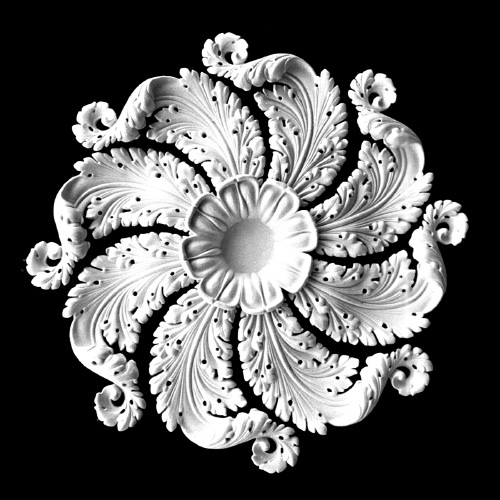
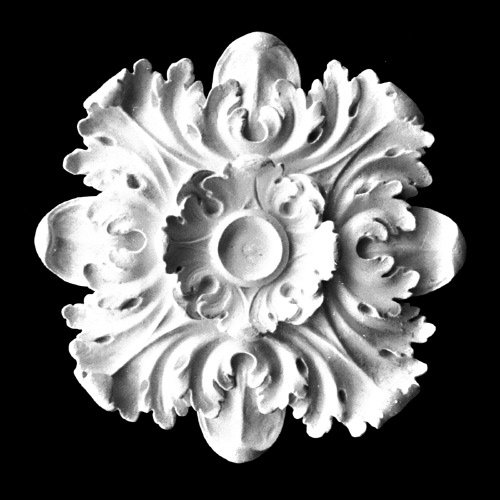
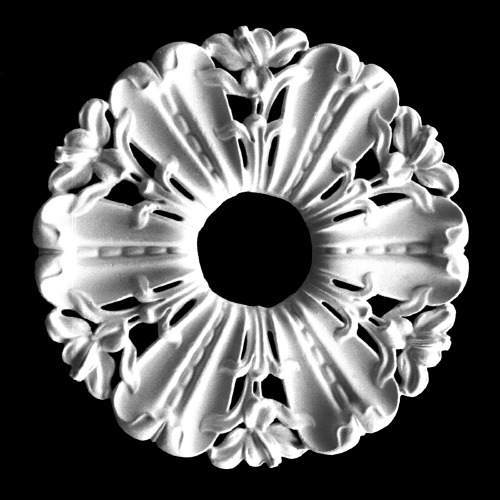

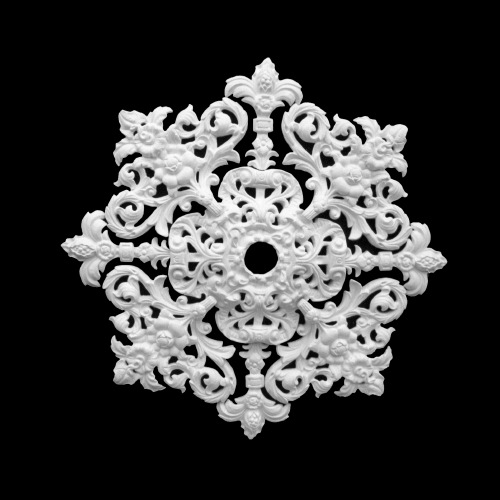

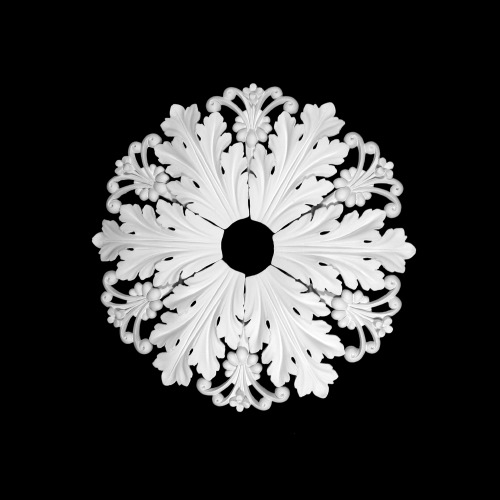
FRONT PARLOR
The lovely wall color and general feel of the room favors darker hues for the recessed paneling - both when the shades are down, casting a serene light on the space, and when the sun enters the room in all its splendor. Because of the coexisting of different architectural and aesthetic elements, we would like to propose trompe l'oeil and mural ideas that play on more muted tones, so as not to appear in strident contrast to the rest of the room. At the same time, the color scheme could evoke tones and shades already present in the room.
Remaining in the theme of open skies, we found two lovely cloudy scenes with hovering birds.
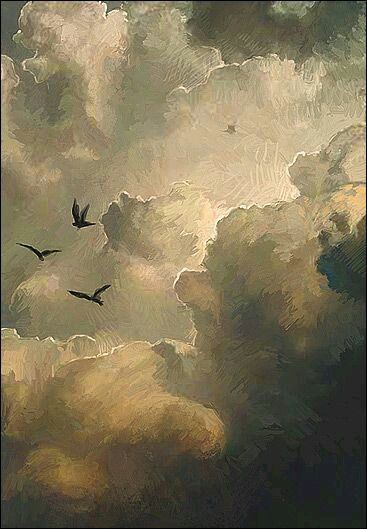
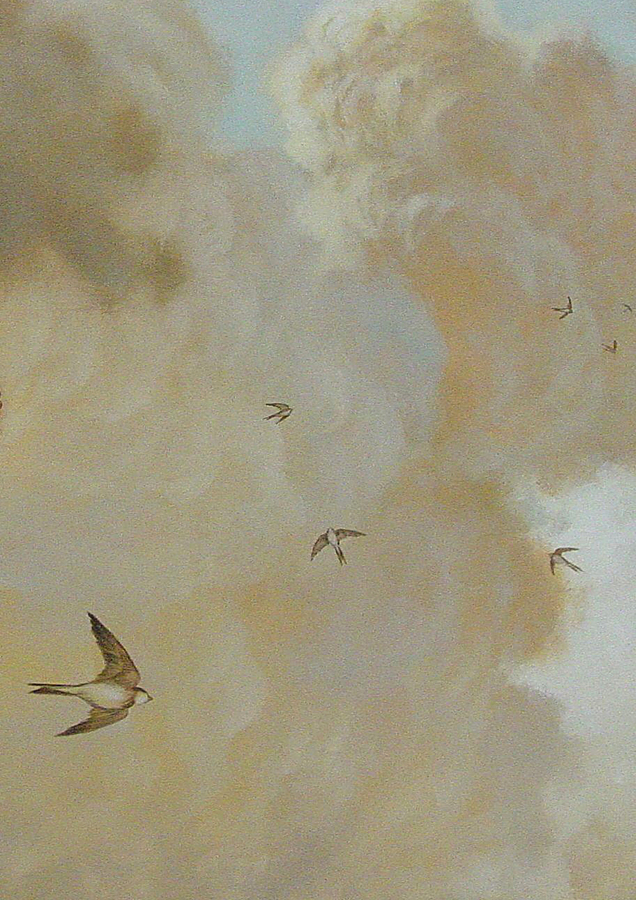
Though in bold colors, we love this sunset sky and think it could figure well in the room, playing on yellow and blue as complementary colors against the red present in the wall.

Here, birds could also be included.
A much bolder approach to the recessed panel in the living room would include a replica or reinterpretation of one of John Singer Sargent's murals at the Museum of Fine Arts. Here are a few striking images:
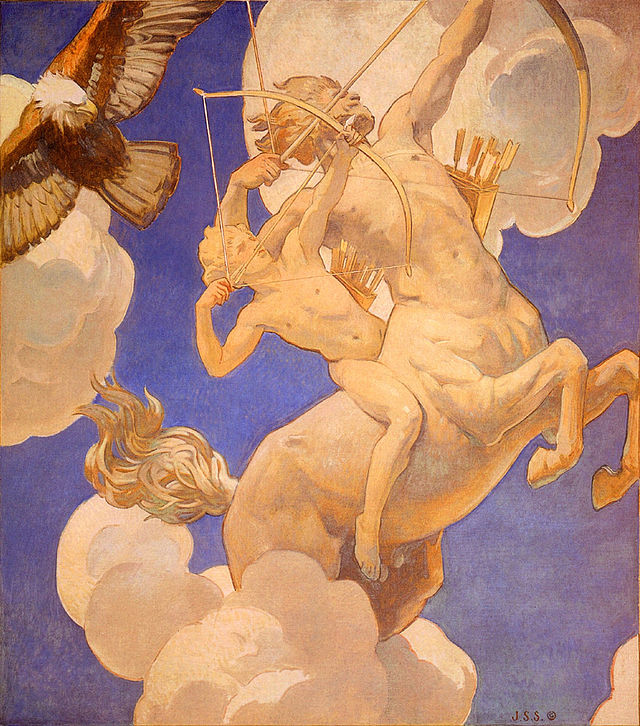
Chiron and Achilles, 1922-25
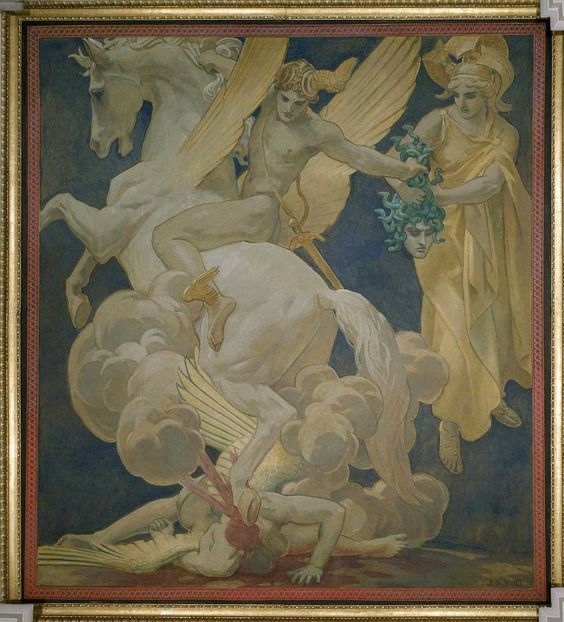
Perseus and Medusa, 1922-25
This photo gives you an idea of what the last painting above would more or less look like when seen from below:
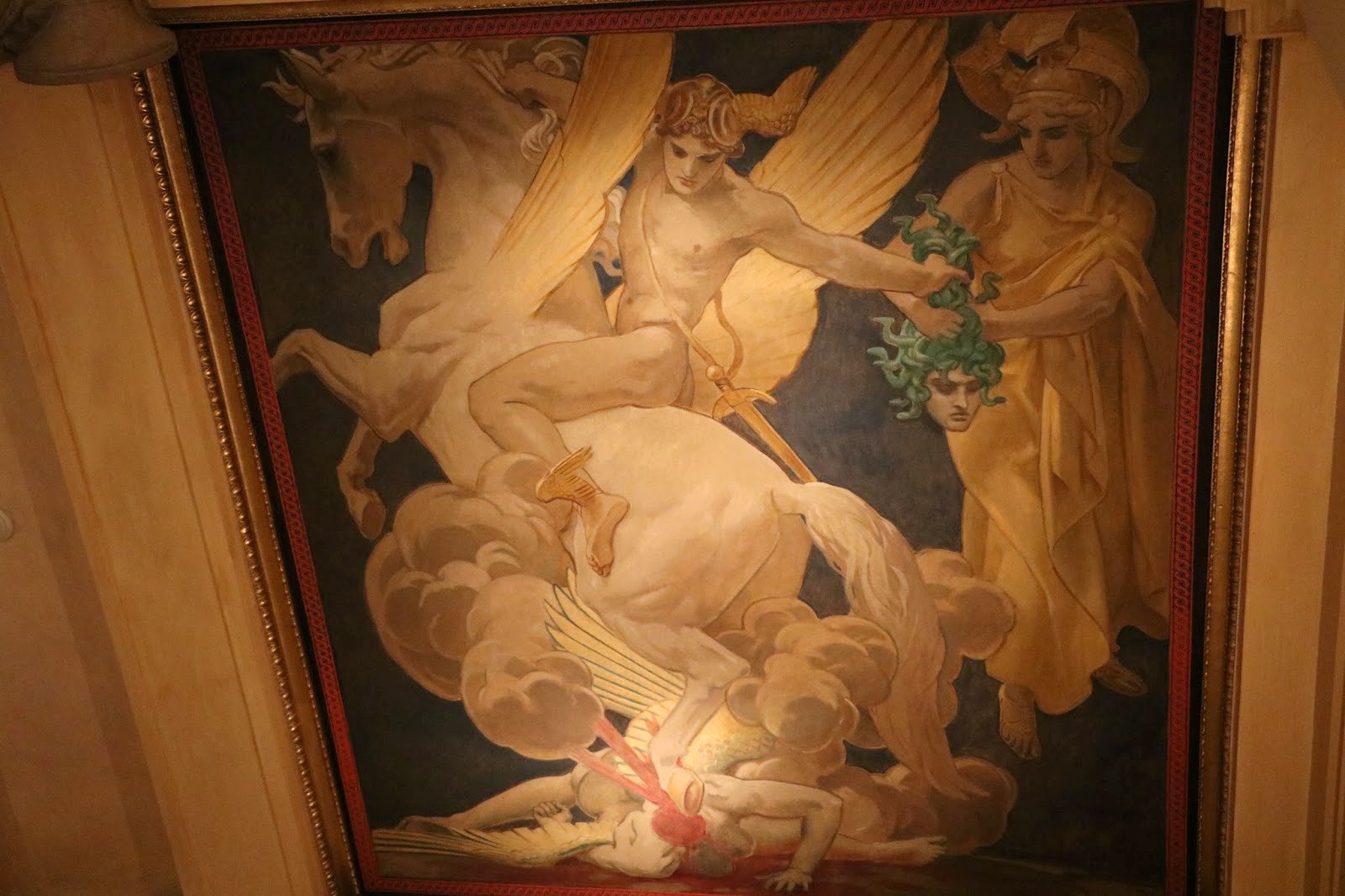
Whatever your choice will be, you will own true works of art.
There are two options available for trompe l'oeil paintings: the artist(s) would paint on location: a scaffolding would have to be set up throughout the duration of the work. Alternatively, they would paint a canvas - or sections of canvas - which, upon completion, would be installed in the recessed panels. We believe this latter option to be the best course of action, as the installation process would take only about a day or so. Further, the canvas would be removable, while a painting executed on the wall surface would be permanent.
Before beginning the work, our artist(s) would create a small-scale version of each painting, so that you can discuss the details and make suggestions. Additionally, to get the full effect, we would use a software to provide you with a photographic recreation of the painting installed in the room.



